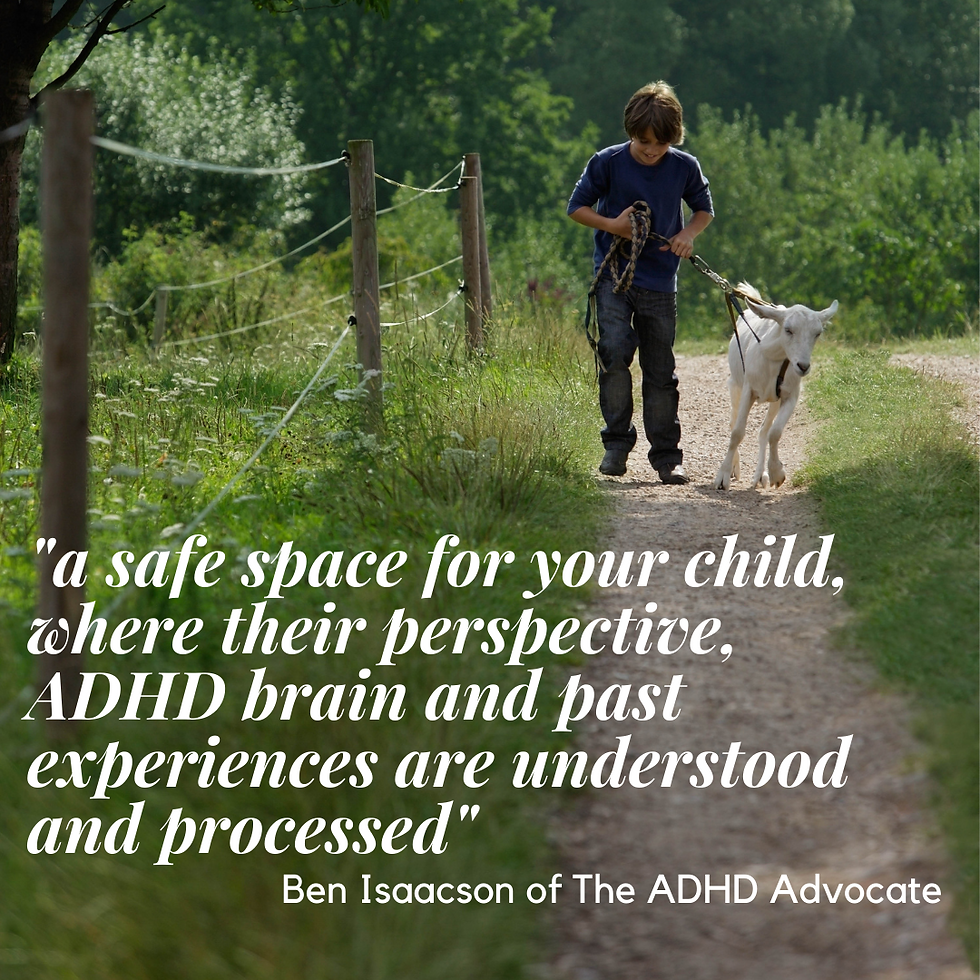A story about Blue Tack as told by our Kids Coach, Ben
- Stephanie Camilleri

- Sep 24, 2021
- 3 min read

Hi, I'm Ben
I look after the children's coaching side of things here at The ADHD Advocate. I want to share with you some of my experiences as not only an ADHD coach, but as a child with ADHD, and for this story, a secondary school teacher as I offer an insight into the classroom. I'll pop up in your newsletters when I get the calling. If you would like more information on how I can help your child thrive with ADHD please click on the blue button at the bottom of this email.
We have been busy here at The ADHD Advocate over the Summer preparing a brand new Family Coaching Programme that covers Parent Coaching and Training as well as Kids' Coaching. We haven't forgotten the other members of the family either. We understand how ADHD can impact on siblings and we have factored this into the support we offer under our new Family Coaching Programme.
We will be doing a FREE Webinar on "ADHD Families - How to thrive, not just survive, with ADHD" THIS MORNING FRIDAY 24 SEPTEMBER AT 10AM. You can register here. We will be able to tell you about our new Family Coaching Programme as well so do join us.
We look forward to seeing you.

One of my most interesting experiences with an ADHD student was during a GCSE class I was holding. As usual, I encouraged my students to begin on the computers promptly, they knew exactly what to be getting on with - it was a coursework session.
Students with ADHD tend to prefer using computers in class because it satisfies a number of processing modalities: The keyboard and mouse provide a kinesthetic and tactile stimulus for those who prefer touch and movement to take in information. The screen provides a large visual stimulus for visual processors. Then there’s the possibility of listening to music to accommodate auditory processors.
The school I was at had a ‘no earphones’ policy, which didn’t help matters. I think there’s a compelling case for earphones in the classroom, but that’s a discussion for another day.

Anyway, back in the classroom, there was one child who was fiddling with ‘blue tack’ while he was meant to be working. The child had received permission from the school Special Education Needs Coordinator (SENCO) to support his ADHD. However, he was clearly not using it as a learning aid, as it was absorbing his full attention. Some would claim he was being creative, which I don’t doubt. The issue I had was that the child wasn’t even trying. From this it was clear that his fidgeting was triggered by a lack of enthusiasm for the subject rather than his processing modalities. The blue tack that had been offered as a tool was in this case a mask for not being engaged enough.
What I found really interesting was what happened when I covered the same student a few weeks later in a Design & Technology class. The student was a completely different person. From start to finish, he was toiling away with all the gusto of an experienced artisan. He clearly didn’t need blue tack for this class, given that he was in his element. It didn’t take a genius to work out what was going on. The child had a clear talent for carpentry. Not only did he thrive at it, but he relished it too. The subject obviously triggered his interests, which is essential for children with ADHD. It just goes to show how important the ‘interest-based’ nervous system is for ADHDers in a learning environment.

This was an extremely talented child, who genuinely struggled to focus when confined to a classroom. But when allowed to use his strengths, he was given permission to thrive. It's important that we are able to recognise when a child's ADHD is holding them back or it's a lack of interest. Through ADHD coaching, children with ADHD learn to recognise their own genuine interests and find their happy place. We also work on tools to help the areas that spark less joy. As let's face it, we are never going to be great at everything, but by finding our passions and learning to grow in areas we are less drawn to, we become more rounded and adaptable.
If you want to learn more about how we can help your children with ADHD tell a new, more empowering story about themselves, come and join our webinar at 10am today (24 September 2021) or get in touch with us to book a free introductory call.




Comments